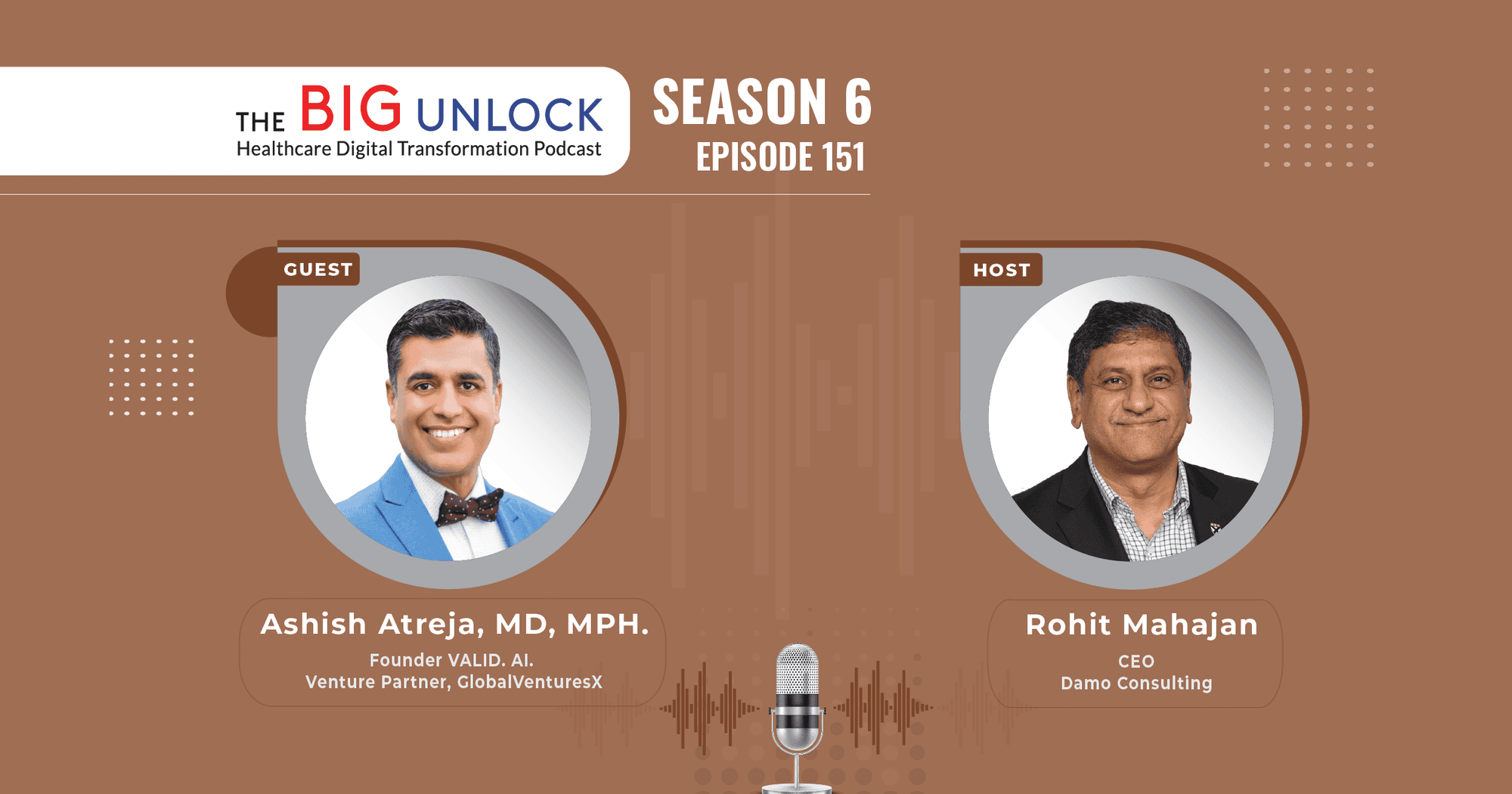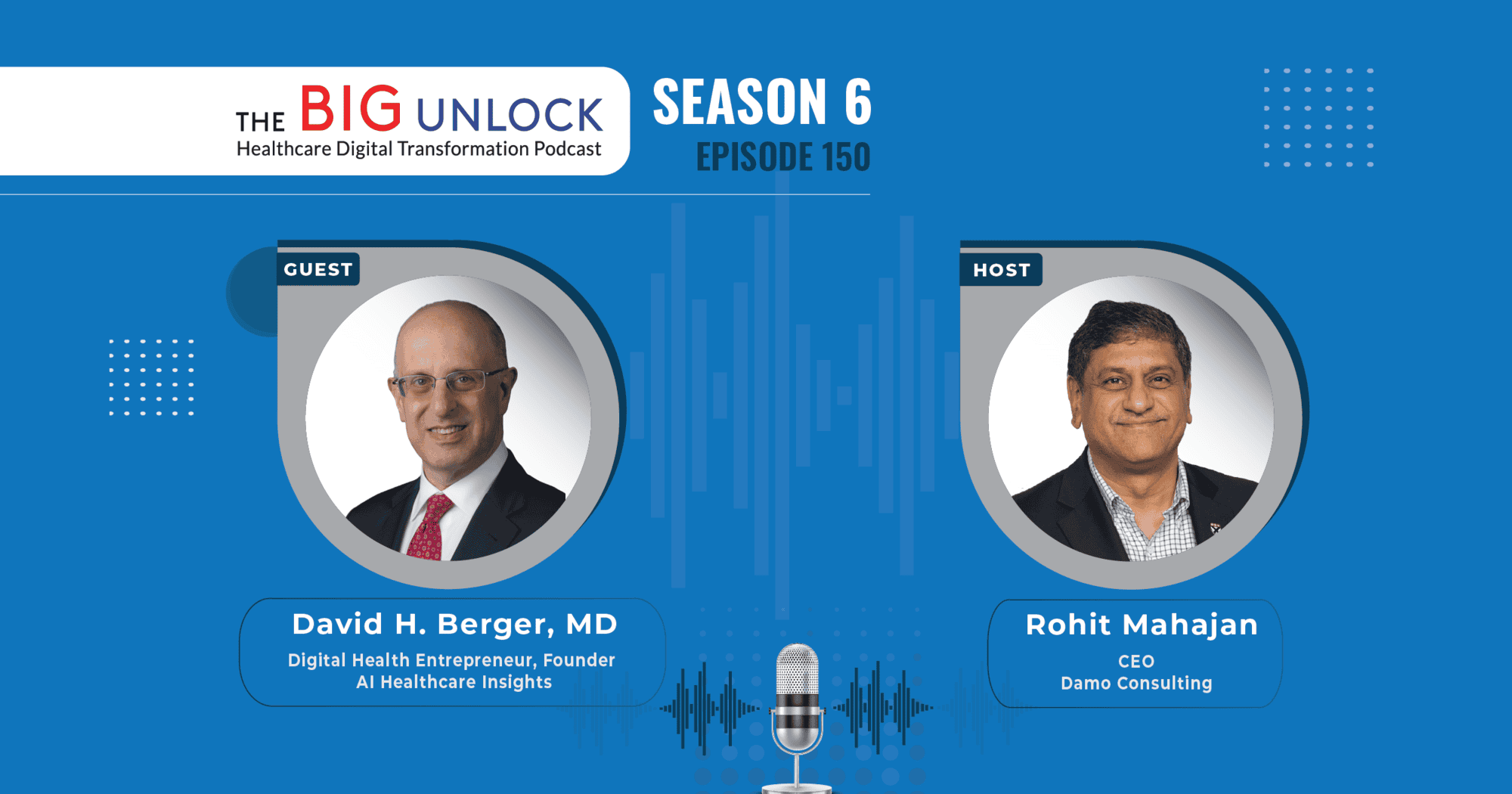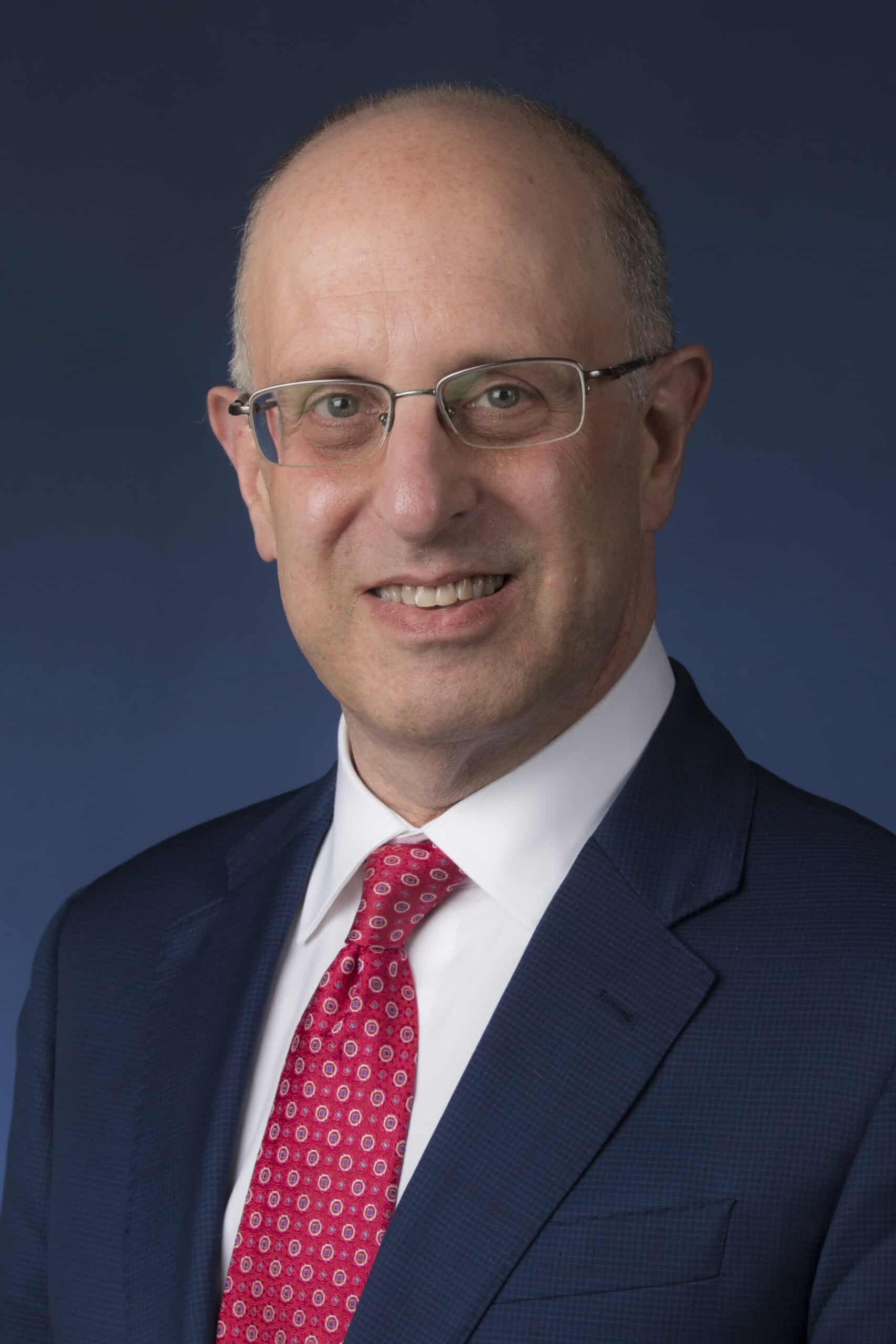Season 6: Episode #151
Podcast with Ashish Atreja, MD, MPH., Founder VALID. AI. Venture Partner, GlobalVenturesX
AI Technology Can Unlock Healthcare’s Productivity Paradox
Share
In this episode, Dr. Ashish Atreja, Founder VALID AI and Venture Partner, GlobalVenturesX, shares his journey from practicing gastroenterology to becoming a leader in healthcare innovation, digital health, and AI. He discusses his experience behind his career shift into informatics and innovation.
Dr. Atreja’s mission to leverage technology to make better physicians, clinicians, and scientists, led to the founding of VALID AI – a collaborative network of over 50 organizations focused on streamlining AI evaluation, governance, and adoption in healthcare.
Dr. Atreja believes AI can resolve healthcare’s long-standing productivity paradox and help scale care delivery beyond traditional limits, reaching millions of patients effectively through technology-driven innovation. He explores key AI use cases. He also stresses on the need for a strategy-first approach, governance frameworks, and continuous monitoring to ensure AI delivers tangible value to healthcare systems. Take a listen.
Show Notes |
||||
| 01:14 | What interests you in the healthcare industry segment to become the CIO of a hospital system? | |||
| 02:47 | How long have you been in the leadership position at UMC, where is it located, and what kind of population does it serve? | |||
| 03:35 | You have done a lot of work from technology perspective to support the business needs of the hospital. You've done over 200 applications and transformed the EMR system. Would you like to share with the audience the thought process that drove those changes and what were some of those changes? | |||
| 07:47 | What do you think about your digital transformation efforts? If you could describe a few of them which have had impact on the patient population. | |||
| 08:30 | Please describe in your own, you know, way that what is digital transformation for provider systems such as yours? Where do you see it going? Some of the challenges that you might have faced and how did it actually end up impacting patients? | |||
| 11:24 | How did you manage to change the mindset of the people? How did they manage to change themselves? To adapt to this new world where technology, especially with AI and GenAI and other new technologies which are coming our way, how do you change mindsets and change behaviors and change culture over there? | |||
| 13:00 | Would you like to provide one example of how the technologies which you were implementing, and you continue to be implementing in your hospital system are accessible and usable by a variety of users, including within the hospital and outside the hospital. | |||
| 16:28 | How do you innovate? Do you involve external parties? Do you have some kind of a, you know, innovation focus department? Or is it part and parcel of everybody's, you know, kind of like daily life? | |||
| 19:24 | What are your thoughts on new technologies, especially Gen AI? Have you been experimenting with any predictive analytics or large language models? What would be your advice or thoughts to any other healthcare leaders on how to go about this journey of exploration? | |||
| 22:15 | Standing here now and looking back, if you were able to go back and change one or two things, what would you like to do differently or have done differently? | |||
Video Podcast and Extracts
About Our Guest

Ashish Atreja, M.D., M.P.H., F.A.C.P., A.G.A.F., is a professor, entrepreneur and an investor who is the nation’s leading voice in evidence-based digital health and AI-led transformation. He has served as CIO and Chief Digital Health Officer at UC Davis Health that expanded the institution’s digital and AI footprint, transformed healthcare delivery and improved patient outcomes. Within two years of his arrival, UC Davis Health became the only health system in California to be digital health most wired level 10 for both inpatient and ambulatory care.
Prior to his UC Davis Health appointment, Atreja, an internist and gastroenterologist, served as the chief innovation officer, Medicine at Mount Sinai Health System. At Mount Sinai, Atreja established one of the first innovation hubs within an academic medical center to build and test disruptive digital health technologies – those that transform the industry. His pioneering work in digital therapeutics, including prescribing mobile health apps for patients, has earned him the nickname 'the app doctor ‘.
Previously, Atreja was at the Cleveland Clinic, where he was Associate Program Director for Informatics Fellowship, led electronic health record implementation, and won an innovation award for developing one of the first virtual pager and messaging applications that was successfully licensed.
In 2016, Atreja established the non-profit Network of Digital Medicine (NODE.Health) Association to connect innovation centers worldwide and share best practices for evidence-based digital medicine between industry, payers and health systems. As an intrapreneur, Atreja has won innovation awards at Cleveland Clinic and Mount Sinai, holds two patents (including one for creating app formulary prescribed from EHR), successfully licensed technologies from academic centers, and served as a founding CEO for a VC-backed digital health spinout that got acquired last year. In 2023, Dr Atreja launched VALIDAI.Health: A collective of 50+ Health systems and health plans with tech partners to build capacity among healthcare organizations to co-validate, execute, and create value from Generative AI in Health. He is currently focused on incubating AI ventures through venture studio.
In addition to a medical degree, Atreja holds a master’s in public health and is a fellow of the American College of Physicians and the American Gastroenterological Association. He has served in many national roles, including as an informatics expert for the CDC HICPAC committee, as an associate editor for the Journal of Digital Biomarkers, as an executive board member for ONC and HL7 FHIR at Scale (FAST) accelerator, and representing UCs on the California-wide Data Exchange Advisory Committee. He has been nominated among the Top 40 HealthCare Transformers in 2017, HIMSS Top 50 Healthcare in 2021 and Health Tech Magazine Top 30 Health IT influencers in 2022. Atreja has published more than 100 academic papers, has been continuously funded by NIH since 2014, and has been a keynote speaker globally on digital health transformation.
Recent Episodes
Q: Hi, Ashish, welcome to the Big Unlock podcast. I’m Rohit Mahajan, CEO and Managing Partner at Damo Consulting. It’s fantastic to have you back on the podcast after a long while. I’m sure things have come a long way. Would you like to start with your introduction?
Ashish: Happy to, Rohit. It’s always a pleasure to talk to you and be on the podcast. I’m Ashish Atreja here at UC Davis Health, and I’m also a venture partner at Global Ventures. I have a mission to create clinicians as co-creators and co-founders for mission-driven initiatives in that regard. I’ve been in the role of Chief Innovation Officer in Medicine at Mount Sinai. Before that, I was an informaticist at Cleveland Clinic. I still practice gastroenterology one day a week at UC Davis Health. I worked as a CIO and Chief Digital Health Officer at UC Davis Health, supporting transformations at scale.
Q: That’s awesome, Ashish, that you’re able to pack so much into one day. Could you please share with us what motivated you on this journey? How did it all start, and how have you been navigating so far? Where are you headed? I think you have a very interesting group which is Valid AI, so perhaps talk about that as well.
Ashish: Absolutely, Rohit. I consider this my fifth career life, and I feel very lucky. I started off as a physician and a public health scholar. My first day of residency at Cleveland Clinic, I saw a lung transplant patient. It was the time when lung transplant was just getting into practice, and the books I used to read didn’t mention how to take care of a lung transplant patient.
There was no knowledge in the books because it took about five years for new knowledge to be printed in books. This was around 1999-2000. Someone told me to look at UpToDate, which was the first good online textbook. I managed my first patient learning from that online textbook. After successfully managing the patient, a spark idea came to me: Wow, it was just a database, but technology made it so easy for knowledge to flow. This was something that was never taught to us in medical school.
I could see, even in 1999-2000 convergence, how much technology could enable us. That led me to pursue informatics and IT. I did an informatics fellowship at Cleveland Clinic, supported inpatient EPIC implementation, and then began my journey in innovation. That was my second life, moving beyond informatics to innovation at Mount Sinai. Then, it was transformation at scale at UC Davis Health. Over the last 20-25 years, I’ve been initially 50 percent and now close to 100 percent in IT, digital health, and AI, with the same mission: How can we leverage technology to make us better physicians, better clinicians, and better scientists?
Q: That’s awesome. You did mention AI, Ashish, and you have a very big initiative around AI with Valid AI. Could you explain what motivated you, what it’s all about, and where it is heading?
Ashish: Absolutely, I’d love to. Earlier, when I was working in digital health, we helped establish one of the first digital health labs in the country at Mount Sinai. We felt the need to have an evidence-based way of looking at digital health applications. At that time, I started Node Health, a network of digital evidence in health—a nonprofit that brought health systems together to independently evaluate digital health applications. I felt the same need in the age of AI, especially generative AI. There are so many solutions coming down the pike—so many algorithms, so many products. How do we even evaluate them? How do we integrate them into our systems? How do we create value from them? Within our health system, we can still work on these solutions, but we’re basically repeating each other’s efforts. If I’m evaluating a solution, another UC is likely doing the same thing somewhere else. We simply don’t have the bandwidth in our health system to duplicate all this work.
Valid AI was created with the goal of bringing people together—to learn together, work together, and create efficiency. This program was endorsed by the UC Office of the President, and we officially launched it at UC Health about a year and two months ago.
We initially had most states in the U.S. represented, with around 38 to 40 health systems and health plans joining the network. We meet biweekly to discuss a range of topics—from organizational maturity and governance to identifying high-impact use cases and necessary monitoring. The goal is to help systems learn from each other and create an efficient approach to transformation.
As we enter year two, VALID stands for Vision, Alignment, and Learning—those were our focus areas in the first year. This year, we’re adding Implementation and Dissemination of Science as our next set of goals. As we receive feedback and grow, the network has expanded to 54 organizations. We’re now thinking seriously about how to implement AI at scale—not just for VALID AI founding partners, but beyond, to extend its benefits to a broader audience. We also want to make AI more affordable and accessible to everyone. To support that, we’re building shared teams designed to empower the entire healthcare ecosystem. It’s a very exciting and important next step for us.
Q: That’s awesome to know. I never knew the full form of VALID like you just described—thanks for explaining it so clearly, Ashish. It’s truly an ocean out there, as you mentioned. Tens, if not hundreds, of health systems are on this AI journey. With such a large landscape, how do you drive meaningful transformation? And what are some of the capabilities you’re working to build around that?
Ashish: Great question. I look at the external landscape and then the internal landscape within organization. I believe there’s enormous potential to create efficiency across the healthcare stream. To achieve that, we need more than isolated efforts—we need a network of organizations working together. So, I look very closely, I’m a part of the working group for Gen AI for CHAI, Coalition of Healthcare AI. So, we need to look at FDA and the governance from the federal government, but then we need something like CHAI to kind of create frameworks. And, and, you know, guidance back in that regard, but then we also need something like train, which I’m part of as well from UC Davis Health, which looks at the train network, looks at how do we kind of really distill things to more infrastructure level and kind of monitor that in a safe manner where VALID AI positions is more on impact.
How do we follow the guidelines from CHAI and the federal government, but how do we actually bring it to reduce to practice is what we call rubber meets the road and really create an impact. So, it really has a return on investment for us in that regard. So, that’s the learning part. But when we look at how do we really create an impact within our organization, moving from, and I had a great discussion with some of the folks and I was saying, all these external network organizations actually are interdependent and support each other.
For example, if we implement something and give feedback to CHAI to, Hey, your open model card really is working and this is how we’re using it. That supports CHAI vision as well. we came with the concept of this Olympic rings, you know, seven Olympic rings or five Olympic rings, which are interconnected.
Yeah. So, we need interconnected different organizations outside to support us from that. But when we look at the landscape for internal to an organization, let’s say UC Davis Health as example, where I’ve been leading the charge on transformation, digital health and AI for the last four years, we need to look first, look at our AI strategy or our overall health system strategy.
Is our focus being in a quaternary hospital? Do we want to expand geographically through care at home? What are the major things we as an organization want to achieve? Because that major strategy then governs how we put AI into it, right? And so, it starts with a strategy-first approach, and then we distill from strategy to governance, which means.
How do we bring AI, which all approvals we have to need, we need cybersecurity team to look at it. We need approvals from ethics and equity compliance kind of committees, whatever structures are there. We need to look at someone from procurement, how they procure in that regard, whether it’s in UCS. We need to have some governance structure, which not only helps us move this along, but also the governance structure also helps us prioritize. Because there are so many possibilities right now, we can and we should not in any way bring all the AI technologies. We cannot and should not do that. We need to look at, out of all those technologies, which is completely aligned with our strategy, that meets our gap. So strategic lens, and then using the strategy lens, prioritize the top five or ten. Then those top five or ten then go through the governance and the implementation and the procurement process.
Once the procurement process happens, then we call it AI adoption roadmap needs to come in, where we have project manager, project coordinators, integration experts, after the procurement, actually putting it together. Then the go-live happens. And then we also need to do evaluation at scale and monitoring at scale.
We need to measure that the algorithm doesn’t degrade. We also need to know that we are creating an outcome which we want. Many times we are guilty of taking a new technology, just implementing it and not measuring its impact and not monitoring it. So I think there’s a new—we call it implementation science—layer that has to be built in.
We published a paper in New England Journal of Medicine AI about the need for creating AI implementation science centers in health systems. Very interesting and right, and I’m a gastroenterologist, so I often crack the joke: you know, the food is there, but our stomach has to be empty enough and there has to be hunger so we can, ingest the food. Once we ingest the food, then we can digest the food. Right. So we need to increase our capacity as health systems to be able to ingest the right kind of AI solutions, and then to be able to digest and create the maximum value from the solutions.
Q: That’s awesome. So, Ashish, since you have been involved with AI and now GenAI for some time, could you narrate any use cases that you might have—being involved with yourselves or people that you know have done successfully? What are some of the things on the landscape that are making it into the health system? And what are some of the future directions that you see over there as well?
Ashish: Yeah, happy to. So, when we started doing research work with Valid AI, we are looking at every single publication, preprint or major journal publication that’s coming for used case. So, we’re setting up a use case library of 165 used cases. And the domains we are finding are either on the employee and physician productivity. So, we are seeing like AI scribe is perfect in that space on physician productivity, but we also seeing emergence of tools which will cater to all employees of the healthcare worker, not just the clinical workforce. And we are kind of looking at those possibilities.
Then we’re also looking at things at the patient automation side. Can we bring generative AI solutions which can guide the patients wherever they are? Because we have an access problem. And it’s not easy just to pick up a phone and talk to anyone in the health system. But can some of the routine work be done by generative AI solutions and guide the patients automated or semi-automated with humans in the loop sometime. Then we also seeing operational efficiency solutions like RCM and those which can allow better enhanced capture. So, we’re seeing kind of a three-legged kind of approach to that.
And we are using a PRISM kind of a method from Gartner, which looks at feasibility as well as time. And we are putting a next layer—is impact. So, you look at the lens from whatever is feasible today and the time to onboard that is not much, and it creates a maximum impact that can help you prioritize the most relevant used cases. In fact, because it’s not about bringing AI, it’s about solving what problem. Yes. And then you find the relevant things, AI or non-AI, to be able to do that. So, part of us is also educating our executives and leaders to start with a design thinking approach or problem-first approach, a strategy-first approach.
And that’s something our phase two of Valid AI looks like, where we create kind of a way to align everyone around strategy and problem-first approach and the most meaningful, impactful use cases that come. And then we are able to measure the impact. So, few cases that we already have implemented. One is AI scribe, and I was talking two years ago, it’s going to be like water. Everyone is going to be using AI scribe. Yes. Because—and this is the first time, Rohit, I have seen the chairman kind of arguing with each other who should go first. Well, technology typically has a productivity paradox when it comes to healthcare. Every industry has benefited with productivity except us in healthcare. But I do feel finally the time is here when we unlock the productivity paradox with technology for healthcare. We generate AI, and AI scribe is a perfect example of that.
So, we implemented in pilot phase and we just got ravishing reviews, including physicians just writing that this is the best technology they have seen till date. And this is a physician who’s about to retire. We didn’t have to train them.
We’ve also brought technologies in vision AI. Something like Aidoc, where we were able to find that more PEs can be detected at an earlier time. So, we fast-tracked that implementation as a platform. So, we have seven sectors in AI from a strategic lens.
So we’ve been able to bring applications from risk prediction, like sepsis algorithms built in LA, then we fine-tuned that to things which can predict how the person is going to go worse based on alerts coming from wearable sensors, to vision AI—computer vision technologies, to technologies like generative AI—from AI scribe, but also then looking at and understanding generative AI. Can we unleash it to all the employees, bring the policies and other together to make every employee more powerful and Impactful.
Q: That’s awesome. So, Ashish, it was really nice meeting you at JPM, a few days ago, actually in sunny San Francisco this time. And, I was at your launch, you know, would love to learn more about what you talked about at the launch on the venture partnership and the kind of startups that are coming through the Venture Studio. Could you share some more information about that?
Ashish: Yes, Rohit. Happy to. I think throughout this informatics and innovation journey, I was lucky to be part of a spin-out from Mount Sinai, which took our app prescribing platform. We were the first ones where doctors could finally prescribe apps, in addition to medicine and surgery, and that got patented and led to a new company launching a startup. I was very grateful to be on the board and see the VC-backed company finally get acquired last year after touching 30 million lives directly and 60 million through UnitedHealthcare. So, in total, 90 million lives touched.
As I looked back on the journey, especially in the age of AI, I feel we can have a better way of partnering or creating startups in partnership with health systems and health plans, maybe embedding our soul. I look at startups as raising a kid. You have to put your heart and soul into it. Initially, their capacity is they need to learn how to poop, they need to wear diapers. But then, they build their capabilities, and that takes time. You need to be patient during that process, nurture them.
So part of it was, especially with generative AI, how can we create an ecosystem where we learn as healthcare organizations how to better partner with startups? Maybe those startups are co-created by different health systems and health plans, that led to the concept of GVX Global Venture Accelerator, where we are creating soulful startups, but in partnership with healthcare organizations. So they are not created outside by someone and then trying to disrupt you inside. They are actually from the very beginning supporting inside-out transformation, right? Because their soul is actually from clinicians as co-founders—a health system-led initiative.
I was very happy to see that launched at JPM. We also launched, along with that, our first startup, called Fusion Care, which is planning to support health systems, health plans, and individual practices in obesity centers for excellence. With the GLP-1, I do feel the biggest trends we have seen in the last few years for us have been, one is obesity and metabolic syndrome, which I, as a gastroenterologist, never felt could be treated by a physician, except for pediatric surgery. Now, this entire, the biggest disease we have of modern civilization, can now be treated with medicine.
But there are many more things that have to come together to treat it, including a whole care team of nutritionists, psychologists, a whole digital plan, which automates the patient follow-up, and putting them into the right reimbursement model. So, Fusion Care is launching and enabling a kind of practice enablement for obesity centers of excellence and metabolic centers of excellence.
And then we are working from a valid AI perspective, how do we bring other things together to fruition of shared services in general in that regard.
Q: That’s awesome. I was there at the panel discussions, and listening to the FusionCare CEO was fantastic. How they’re intending to make this change from inside out, as you’re describing, is the right way to do it, Ashish.
So, Ashish, as we come up on the end of the podcast, are there any other plans for the future or any new things that you are working on that you would like to share with the audience?
Ashish: This is good. Thank you. I have devoted, I think, for the next phase to, as I was supporting transformation at scale at UC Davis, really taking some time off to support the same journey for multiple health systems, health plans, and pharma together. Bringing things together, kind of expanding from the Valid AI experience into that.
I feel this will be fascinating because, can we, through a Venture Studio or Venture Accelerator, over the next 10 years, touch 1 billion lives? That’s the goal which I have put. We touched 30 million, 60 million lives in the past one. But how great would that be? As a physician, I would not be able to meaningfully touch more than 10,000 patients in the traditional care I can deliver. But through technology as an enabler, we have the potential to touch masses if we do the things right. Very large footprint.
So, I’m looking for very meaningful partnerships with health plans, health systems, and life sciences to co-create entities together. So we don’t have to follow someone else leading and disrupting us and creating all those barriers. We can evolve ourselves, kind of a true metamorphosis that happens from inside out. So that’s what we are on the journey for, and I’d love to hear from others, get them as partners, and together we can shape this next phase of our exciting journey.
We hope you enjoyed this podcast. Subscribe to our podcast series at www.thebigunlock.com and write to us at [email protected]
Disclaimer: This Q&A has been derived from the podcast transcript and has been edited for readability and clarity.
About the host
Paddy is the co-author of Healthcare Digital Transformation – How Consumerism, Technology and Pandemic are Accelerating the Future (Taylor & Francis, Aug 2020), along with Edward W. Marx. Paddy is also the author of the best-selling book The Big Unlock – Harnessing Data and Growing Digital Health Businesses in a Value-based Care Era (Archway Publishing, 2017). He is the host of the highly subscribed The Big Unlock podcast on digital transformation in healthcare featuring C-level executives from the healthcare and technology sectors. He is widely published and has a by-lined column in CIO Magazine and other respected industry publications.
About the Host
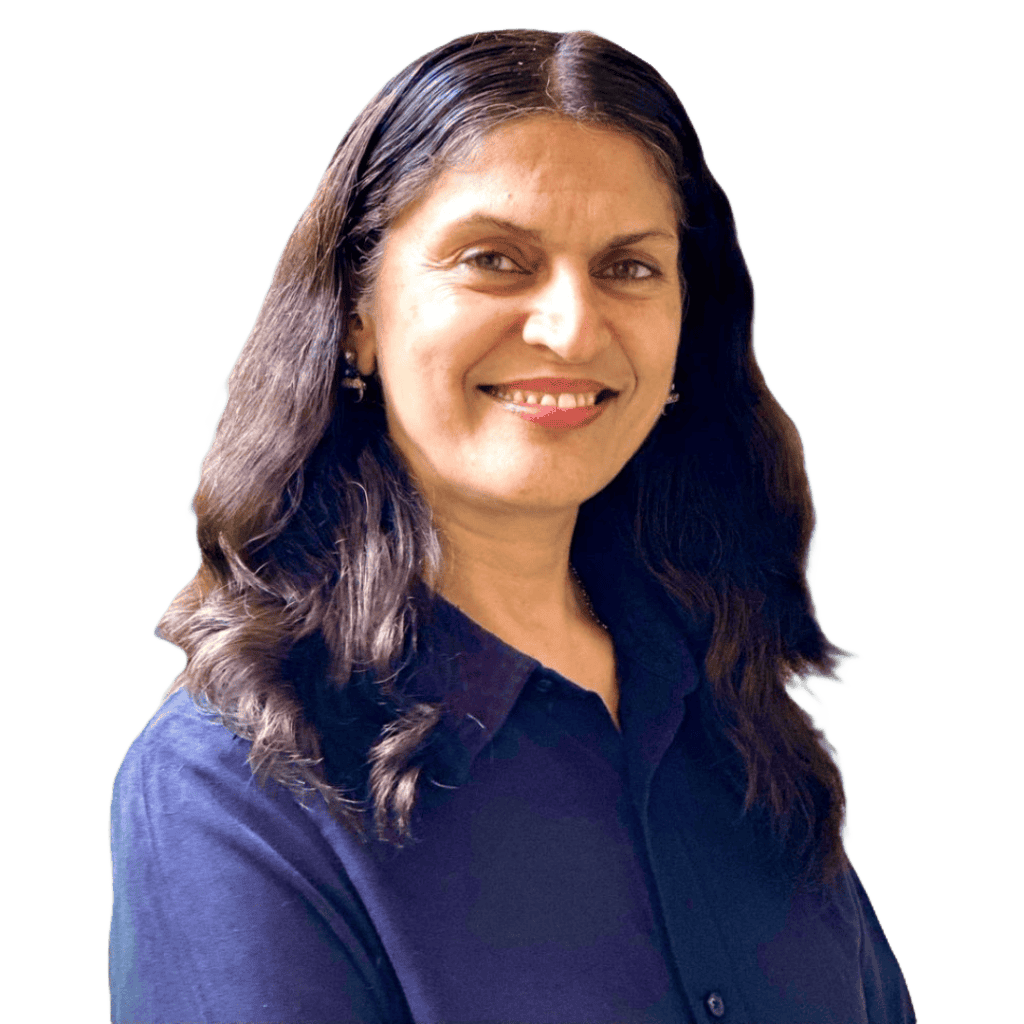
Ritu M. Uberoy has over twenty-five years of experience in the software and information technology industry in the United States and in India. She established Saviance Technologies in India and has been involved in the delivery of several successful software projects and products to clients in various industry segments.
Ritu completed AI for Health Care: Concepts and Applications from the Harvard T.H. Chan School of Public Health and Applied Generative AI for Digital Transformation from MIT Professional Education. She has successfully taught Gen AI concepts in a classroom setting in Houston and in workshop settings to C-Suite leaders in Boston and Cleveland. She attended HIMSS in March 2024 at Orlando and the Imagination in Action AI Summit at MIT in April 2024. She is also responsible for the GenAI Center of Excellence at BigRio and DigiMTM Digital Maturity Model and Assessment at Damo.
Ritu earned her Bachelor’s degree in Computer Science from Delhi Institute of Technology (now NSIT) and a Master’s degree in Computer Science from Santa Clara University in California. She has participated in the Fellow’s program at The Wharton School, University of Pennsylvania.
About the Host
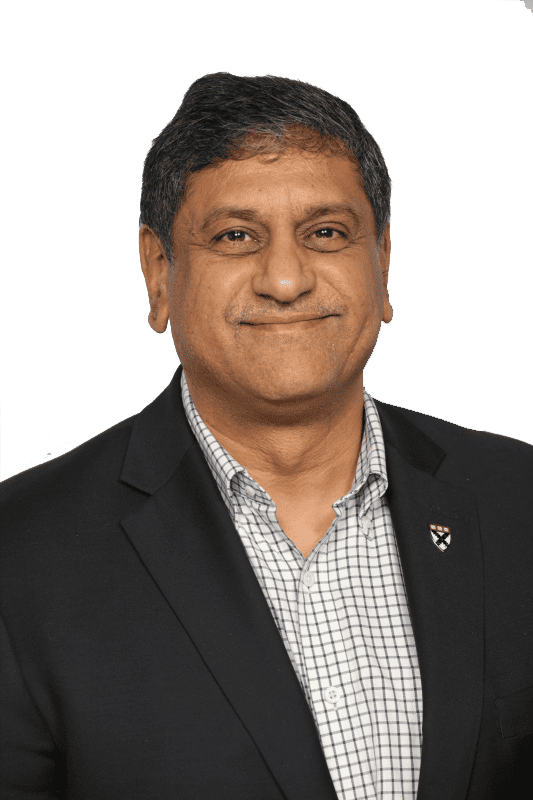
Rohit Mahajan is an entrepreneur and a leader in the information technology and software industry. His focus lies in the field of artificial intelligence and digital transformation. He has also written a book on Quantum Care, A Deep Dive into AI for Health Delivery and Research that has been published and has been trending #1 in several categories on Amazon.
Rohit is skilled in business and IT strategy, M&A, Sales & Marketing and Global Delivery. He holds a bachelor’s degree in Electronics and Communications Engineering, is a Wharton School Fellow and a graduate from the Harvard Business School.
Rohit is the CEO of Damo, Managing Partner and CEO of BigRio, the President at Citadel Discovery, Advisor at CarTwin, Managing Partner at C2R Tech, and Founder at BetterLungs. He has previously also worked with IBM and Wipro. He completed his executive education programs in AI in Business and Healthcare from MIT Sloan, MIT CSAIL and Harvard School of Public Health. He has completed the Global Healthcare Leaders Program from Harvard Medical School.
About the Legend
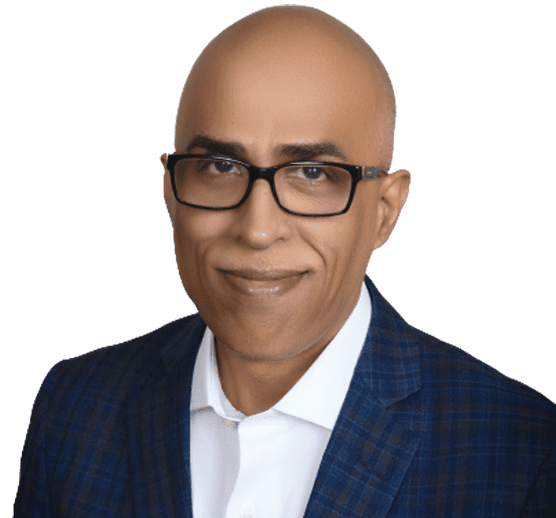
Paddy was the co-author of Healthcare Digital Transformation – How Consumerism, Technology and Pandemic are Accelerating the Future (Taylor & Francis, Aug 2020), along with Edward W. Marx. Paddy was also the author of the best-selling book The Big Unlock – Harnessing Data and Growing Digital Health Businesses in a Value-based Care Era (Archway Publishing, 2017). He was the host of the highly subscribed The Big Unlock podcast on digital transformation in healthcare featuring C-level executives from the healthcare and technology sectors. He was widely published and had a by-lined column in CIO Magazine and other respected industry publications.

